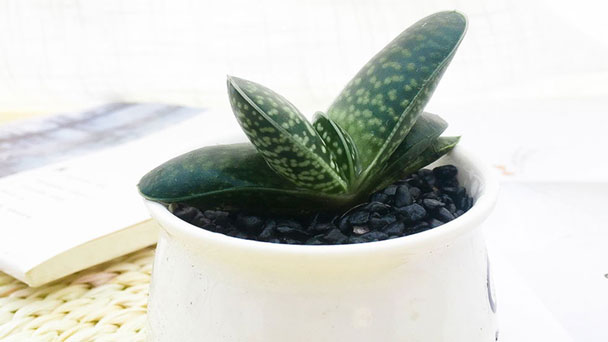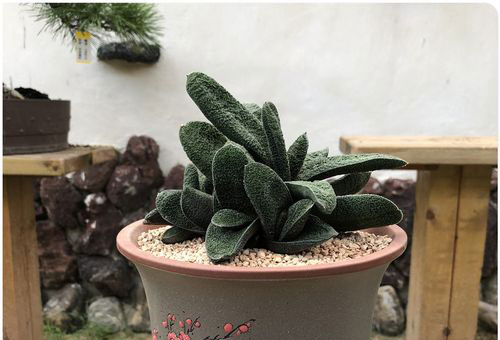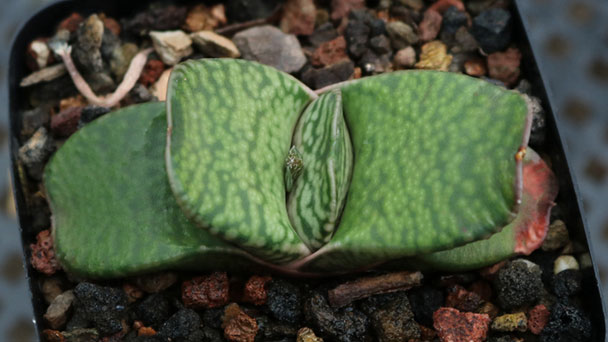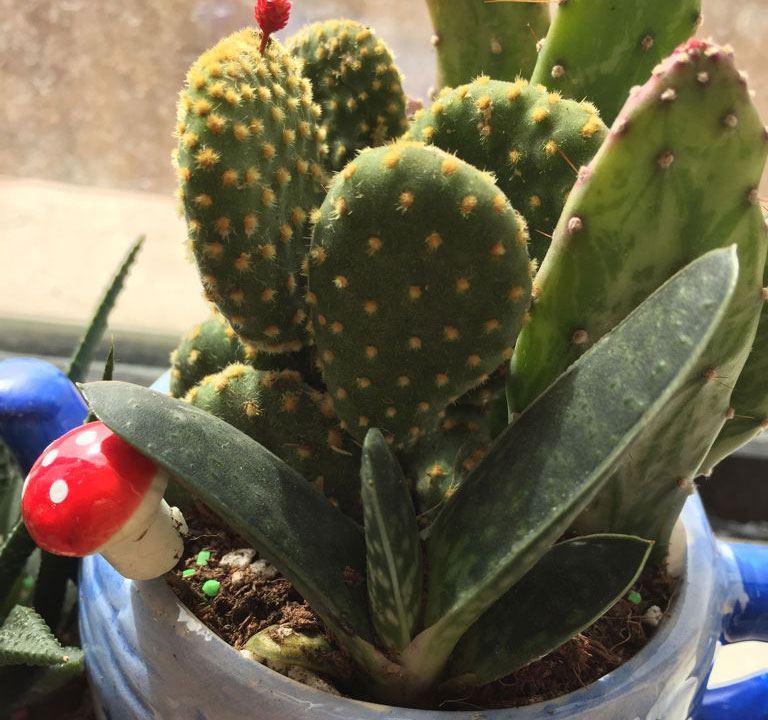How to Grow & Care for Gasteria Succulent
Written by Iris
Nov 03 2021

Gasteria is a genus of succulent plants native to South Africa and related to aloe vera, Twelve rolls, and virgins. Gasteria includes about 80 different species that are known for their beautiful, very striking tongue-like leaves, which vary in size from small, compact leaves to long, tongue-like leaves.


If you are growing gasteria as a houseplant its advisable they are placed in a bright position away from strong sunshine, and a window that receives some part sun for example morning sun that is not too strong is best, avoid afternoon sun in a south facing position in a window or if only a south facing position is available then you can cover the window with a shade cloth or net so the plant receives dappled sunshine.
Pruning
Cut through the stem within 1/2 inch of the desired leaf or node. Make the cut at a 45-degree angle using a clean, sharp knife. Remove up to a third of each stem's length as you prune. For trailing succulent varieties, vary the length of each pruned stem to give the plant more visual interest.
Overwatering can cause root rot, which shows up as black, mushy spots at the base of the plant or on the leaves.
If this happens, saving the plant is rare, but you may be able to grow a new plant from cuttings.
To avoid rot:
'Gasteria maculata' offers features similar to Gasteria verrucosa but lacks the warty protrusions.
'Gasteria glomerata' has a compact size that remains only a few inches tall.
Where to Grow Gasteria SucculentHow to Grow Gasteria SucculentGasteria Succulent Propagation with Leaf CuttingsGasteria Succulent Propagation with Stem CuttingsGasteria Succulent Propagation with DivisionHow to Care for Gasteria SucculentGasteria Succulent Light RequirementsGasteria Succulent Soil CareGasteria Succulent WateringGasteria Succulent Temperature & Humidity CareGasteria Succulent FertilizerGasteria Succulent Pests & DiseasesVarieties of Gasteria Succulent
Where to Grow Gasteria Succulent
Gasteria Little Warty isn't cold-hardy, so if you reside in a zone that gets cooler than 30°F (-1.1°C), the best is to plant this succulent in a container that can be brought inside your home. It succeeds in bright sunlight. If growing your plant indoors, place it in a spot that gets a lot of sunshine, that is near a southern-facing window if you are in the Northern Hemisphere.
How to Grow Gasteria Succulent
Gasteria Succulent Propagation with Leaf Cuttings
Gasteria Succulent Leaves that are halfway along the vine have the most potential due to its size and maturity. Gently place your fingers between the mother's stem and the leaf's base, pulling it downwards until you hear a snap. Ensure the wound is wholly intact with no damage, as a bruise or tear will result in unsuccessful propagation. Set the leaf ON TOP OF a bed of moist 'Cactus & Succulent' compost for root growth. Not only will this callus the wound (to prevent disease), but it'll also speed up the propagation process considerably. Once there are signs of small roots developing on the node, place it one third into the compost, at a slight angle. Provide a bright setting with temperatures around 18°C (64°F) with the majority of the soil drying out in between waters. New leaves should emerge within a month or two, thus signalling the start of its independent life!Gasteria Succulent Propagation with Stem Cuttings
Using a clean pair of scissors, cut a 10cm (4 - 5 inches) section off the Gasteria Succulent stem's end. Be sure to use a fresh, damage or pest-free piece as unhealthy divisions are more likely to fail. Remove the older half of the leaves, so that the stem's lower portion is bare, to speed the process of root development. Purchase a 'Cactus & Succulent' compost and vertically push the cutting's base into the soil, avoiding the risk of covering the actual foliage with soil. Situate the cutting in a bright, indirect setting with temperatures above 18°C (64°F). As the roots will develop first, remove the bag and treat it as an adult specimen once there are signs of new foliar development.Gasteria Succulent Propagation with Division
For this method, it's best to divide Gasteria Succulent in spring or summer and once the offshoots are at least a quarter of the mother plant's size. Remove its pot and place your hand in between the junction that connects the two; soil may have to be brushed away to get a better grip. Gently push the pup downwards while supporting the mother gasteria succulent plant until you hear a snap. Cautiously separate the root systems, keeping great care in keeping them damage-free. Place the new plantlet in a small pot with a well-draining potting mix, much similar to the original soil, and maintain the same care routines. 'Cactus & Succulent' compost is best, or you can make your own using multipurpose compost with added grit or perlite. Provide a bright setting with temperatures around 18°C (64°F) with the majority of the soil drying out in between waters. New leaves should emerge within the six weeks, as long as the soil is kept on the drier to life.
How to Care for Gasteria Succulent
Gasteria Succulent Light Requirements
Gasteria like to be grown in a position that receives plenty of bright natural light but these plants prefer to be away from strong direct sunshine and a position that receives part sun or indirect sunshine is best for growing these plants. Too much sunshine can make the leaves on these plants turn yellow or red.If you are growing gasteria as a houseplant its advisable they are placed in a bright position away from strong sunshine, and a window that receives some part sun for example morning sun that is not too strong is best, avoid afternoon sun in a south facing position in a window or if only a south facing position is available then you can cover the window with a shade cloth or net so the plant receives dappled sunshine.
Gasteria Succulent Soil Care
Suitable shop soil for Gasteria Succulent with a small addition of sand. For a mixture of own preparation, take: turf, garden soil, coarse sand. You can add charcoal and brick crumbs. Do not recommend peat. Requires good drainage.Gasteria Succulent Watering
Less is more with Gasteria. Allow ALL of the soil to dry in between waters, reducing this to once every few weeks in the autumn and winter. One word of advice is never to allow excess moisture to settle either in the actual crown of the plant or underneath the pot, as both will cause southern blight or even black rot. Under-watering symptoms include drooping leaves, stunted growth, and drying leaves; these can be a range of different issues, including forgetfulness, too much sunlight, or the plant being pot-bound. Over-watering symptoms include root rot, a rotting base, or sudden plant death. Gasteria must have sufficient light levels (at least two hours of direct sunlight a day) to counteract the chance of root rot. For more severe cases, click on this link below to learn about how to address root rot.Gasteria Succulent Temperature & Humidity Care
Gasteria generally likes warm summers and slightly cool winters (down to 50 degrees Fahrenheit). Frost can be deadly to the plants. During warm weather, gasteria leaves might turn a lighter, brighter color, which is perfectly natural. Moreover, like most succulents, gasteria plants don't enjoy very humid environments. So if you live in a humid climate be sure only to water your plant when the soil is dry to prevent rot, as the humidity will provide much of the plant's required moisture.Gasteria Succulent Fertilizer
Fertilize once every spring with a cactus fertilizer. Gasteria plants like a bit more organic matter in their soil than most succulents do, so mixing in a bit of compost at the time of planting can be a good idea.Pruning
Cut through the stem within 1/2 inch of the desired leaf or node. Make the cut at a 45-degree angle using a clean, sharp knife. Remove up to a third of each stem's length as you prune. For trailing succulent varieties, vary the length of each pruned stem to give the plant more visual interest.
Gasteria Succulent Pests & Diseases
Gasteria plants are generally resistant to pests and problems. Watch out for root mealybugs which can become an issue. As long as you are not overwatering, you should not experience any difficulties.Overwatering can cause root rot, which shows up as black, mushy spots at the base of the plant or on the leaves.
If this happens, saving the plant is rare, but you may be able to grow a new plant from cuttings.
To avoid rot:
- Water only at the base of the plant
- Don't get the leaves wet
- Allow the soil to dry out almost completely between waterings

Varieties of Gasteria Succulent
'Gasteria verrucosa' boasts distinctive thick and oblong leaves covered with white warts,'Gasteria maculata' offers features similar to Gasteria verrucosa but lacks the warty protrusions.
'Gasteria glomerata' has a compact size that remains only a few inches tall.
Latest Updated
- Benefits of Bugleweed - 7 Science-backed Health Benefits
- Bugleweed Dangers & Side Effects - Is It Poisonous?
- How to Plant Evergreen Trees - What You Should Know
- When to Plant Evergreens - Grow Guide for Evergreen Trees
- 12 Wonderful Evergreen Shrubs for Your Garden
- 12 Popular Evergreen Plants with Pictures for Beginners
- When And How To Prune A Lilac Bush Like a Pro
- How to Grow & Care for Lilac Vine (Hardenbergia Violacea)
- Japanese Lilac Tree (Syringa Reticulata) Care & Propagation Guide
- Shumard Oak Pros and Cons - What to Know
Popular Articles
- Winter maintenance of Antirrhinum Majus
- How to Grow Terminalia Mantaly Tree
- How to Grow and Care for Crossostephium Chinense
- How to grow Antirrhinum Majus in spring
- Peristeria Elata (Dove Orchid) Profile: Info & Care Guide
- Underwatered Snake Plant (Sansevieria Trifasciata) - Signs And How To Fix
- How to Care for Brazilian Jasmine Plant (Mandevilla Sanderi)
- How to Grow & Care for Graptopetalum Purple Delight in Summer
- Rosa Chinensis (China Rose): Plant Growing & Care Tips
- How to Care for Baby Sun Rose (Aptenia Cordifolia)